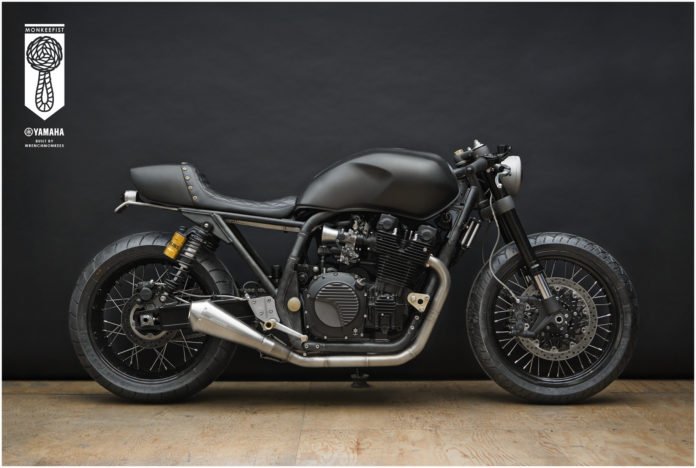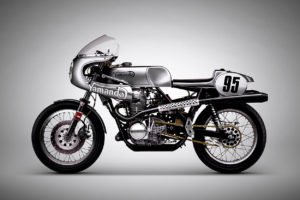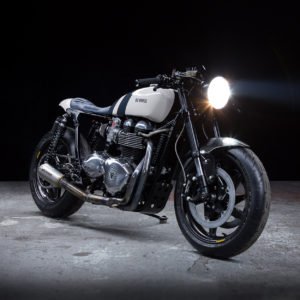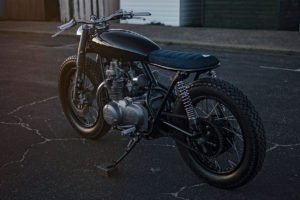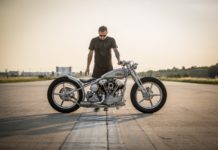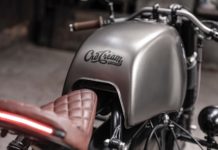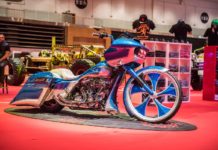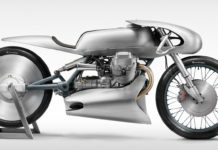The term ‘Cafe Racer’ seems to be increasingly prevalent over the last few years. You hear it at your local biker hang-out, coffee shops, garages and even from shots of Beckham for H&M.
There is a generic description to these bikes, but in my eyes everyone sees them a little different.
The dictionary definition is: A lightweight, lightly powered motorcycle optimized for speed and handling rather than comfort – and for quick rides over short distances. With bodywork and control layout recalling early 1960’s Grand Prix road racing motorcycles, cafe racers are noted for their visual minimalism, featuring low-mounted handlebars, prominent seat cowling and elongated fuel tank and frequently knee-grips indented in the fuel tank. (Wikipedia)
To me and a lot of other riders, they mean a whole lot more.
Where it all begins.
The nostalgia these “time-machines” brings to their rider are limitless, whether you’re riding a 2016 Thruxton R or a 1970 CB450 you are a part of an elite group of bikers called “Cafe Racers”, yes kiddies… it’s the same name as the bike your riding!
True Cafe Racers (the riders), will undoubtedly claim the birth place of these bikes and the history of them coming from London, England in the 1960’s. During the 60’s Rockers would race from the cafe to cafe, after selecting a certain record on the duke box, and return before the record finished.
This feat often necessitated achieving ‘the ton’ or 100 mph. I know this because my dad was one of these “ton-up boys”.
During this period affordable motorcycles that could achieve the ton, were few and far between. For the average worker and motorcycle owner, the only option of getting the desired performance was to tweak the bike with various racing options. Modified or custom parts made the task easier. As riders would add more parts (as their budgets allowed) and a standard look began to materialize – what we see on our modern Cafe Racers today.
The typical specification of a Cafe Racer would be:
- Swept-back pipes
- Clip-on’s or ‘Ace’ bars
- Reverse megaphone exhausts
- Road hugging tires
- Larger carburetors
- Rear sets
- Knee pads
The 2 most popular bikes for cafe racers are Japanese and British bike and this is truly a matter of flavor. For me, I keep it close to the heart and I stick with the triumphs / Brit Bikes.
Honda’s are also a great build bike for a café racer and we can see an array of craftsmanship and detail in many of the builds coming out of Dubai and the region.
Vintage or Modern Classic?
Whilst I am a huge lover of classic Cafe Racers, a modern classic / cafe racer is the solution for those who can’t build their own cafe racer or just don’t want to have the maintenance of and old bike.
Due to the fact that many people in our generation can’t find or afford a classic, building or customizing your own modern bike and making it ‘retro’ is a viable option.
Since the scene for cafe racers is constantly growing, motorcycle manufacturers are getting more clued up to this niche: the modern cafe racer. These are bikes have a classic look, but with the technology of a modern motorcycle like modern brakes, suspension, fuel- and electrical systems.
Saying that, there is something truly awe striking about a true café racer classic.


